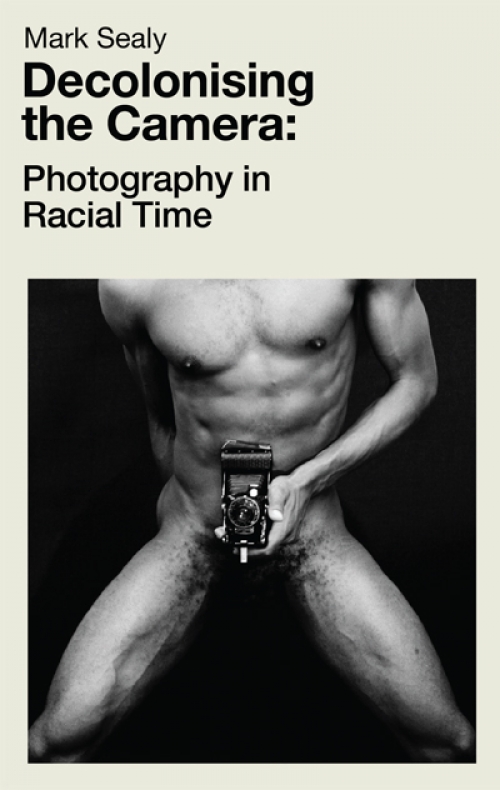'I am a human and I will be seen': the anti-imperialist power of the photographic image

Kate Potts introduces an extract from Decolonising the Camera: Photography in Racial Time, the new book from Autograph ABP director Mark Sealy, published by Lawrence and Wishart
This book trains Sealy’s sharp critical eye on the racial politics at work within photography. In the context of heated discussions around race and representation, the legacies of colonialism, and the importance of decolonising the university, Sealy analyses a series of images within and against the violent political reality of Western imperialism, and aims to extract new meanings and develop new ways of seeing that bring the Other into focus.
Sealy asks ‘Has photography been a liberating device, or an oppressive weapon that holds the viewer/producer and citizen/subject in a violent system of continual exposure? Can photographic works concerning visualisations of the “Other” produce different or new meanings when they are critically read through the prism of colonialism?’
In this extract from Chapter Four, Sealy homes in on a series of photographs taken by a young German photojournalist, Robert Lebeck, in what is now the Democratic Republic of the Congo (DRC) on the eve of independence in June 1960. During a parade through the capital city, the Belgian King Baudouin and incoming President Joseph Kasavubu stood and waved to the crowds from an open-topped car, in a pre-independence ceremony replete with colonial symbolism. Sealy takes the reader through the dramatic sequence of events and images that followed..........
‘The Sword “Thief”?
As the Cadillac crawled down the wide boulevard, a “young Congolese” man snatched the king’s sword from the rear seat of the car. In the next photograph, he is visible then turning back with both arms raised, straight towards Lebeck and his anticipating camera. In this act of defiance, the Congolese man becomes a radical transformative figure across the space and time of the “first, second and third world”. He is caught by Lebeck’s photograph between the colonial and postcolonial moments. The compulsion to grab the king’s sword can be read as this colonial subject acting physically against the colonising authority, at the moment he recognises his release.
The young Congolese man acts as if he is caught within an impulsive condition of cultural reclamation work in which, for a fleeting time, he is restored back to himself and, by extension, the nation is restored to an imagined freedom. In grabbing the sword this man is declaring, “I am a human and I will be seen”, and in stealing it directly from the king, he symbolically disarms or strips away the sovereign’s power of authority over the Congo.

Photograph by Robert Lebeck, Archiv Robert Lebeck
The defining aspects of Lebeck’s photograph are visible in the two opposing but distinctive gestures of the thief’s left and right hands. His right hand is clutching the stolen ceremonial sword of King Baudouin. It is caught not only in the act of stealing the sword but also, because of its angle at the moment the photograph was taken, it also appears to be making another and unwittingly symbolic sign of independence, freedom and love: the Black Power salute.
The fist as a sign here is even more potent because the black Congolese hand is wrapped around the European king’s historic symbol of power. The thief is therefore transformed into an iconic symbol of African liberation. The thief’s black right fist is in contrast to the brilliant white of King Baudouin’s royal uniform. The king salutes the Belgian flags on the left of the frame, as both Kasavubu and Baudouin, oblivious to the incident, focus on their shared political vision ahead.

Photograph by Robert Lebeck, Archiv Robert Lebeck
Reading this photograph through Fanon’s theory of the “wretched ones” in Wretched of the Earth, and by building a context in which different knowledges can surface out of the past, brings forth numerous possible narratives in the present. These narratives make it possible to break with the burdens of tradition when we discuss the representation of African independenc.
The position of the sword visually and metaphorically cuts the torso of the king in half, and punctures the body of the newly elected president, Joseph Kasavubu. Because these two acts happen simultaneously in the image, the conservative Kasavubu is sutured to his old colonial masters forever. In the refracted reflection of the thief in the convex curves of the state car, the sword seems to be aimed at the compliant head of Kasavubu as he bows to the white crowds and the two Belgian flags being held high above him.
In this pose, Kasavubu enters the dock of history charged with being a political puppet. Lebeck’s photograph opens a historical visual trial in which all those present could be accused of delivering false new freedoms. The expression on the Congolese man’s face as he grabs the sword is one of pained anxiety. This is not a jubilant moment for him. As he looks back down Boulevard Albert, the colonial/neocolonial transformation crystallises in front of him, in the form of the Congolese army soldiers still commanded by the white Belgian officers that are about to arrest him.’
Decolonising the Camera: Photography in Racial Time is available from Lawrence and Wishart.

Kate Potts
Kate Potts is website and marketing manager for radical independent publisher Lawrence and Wishart.
